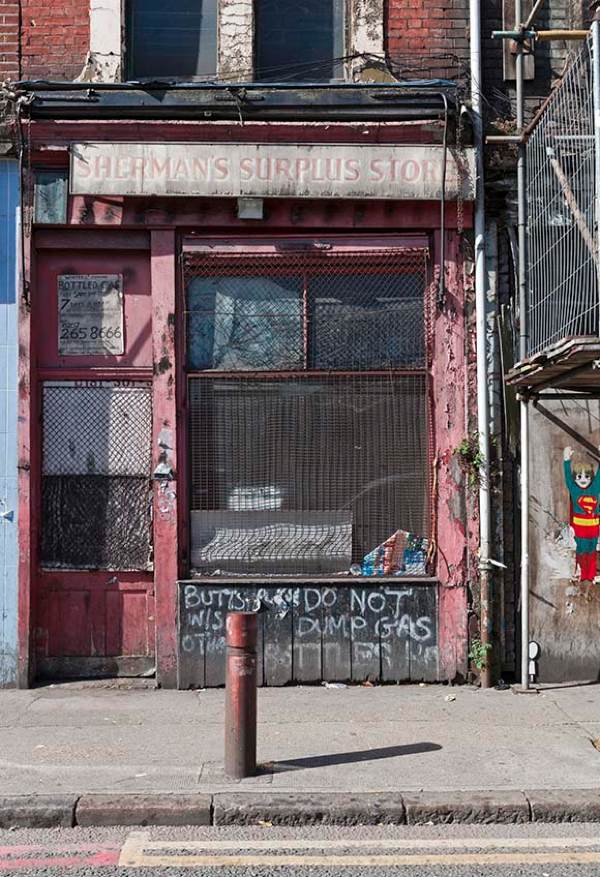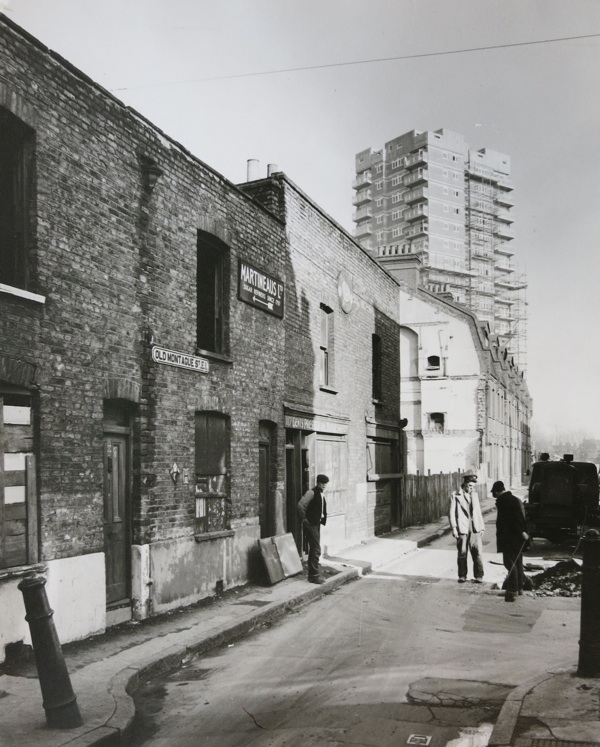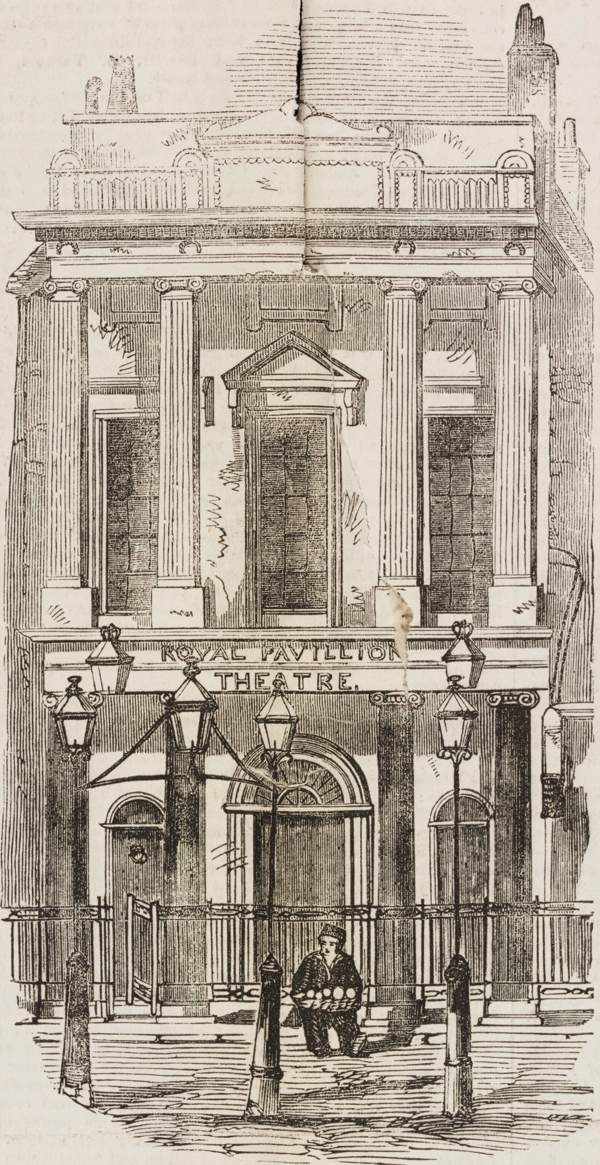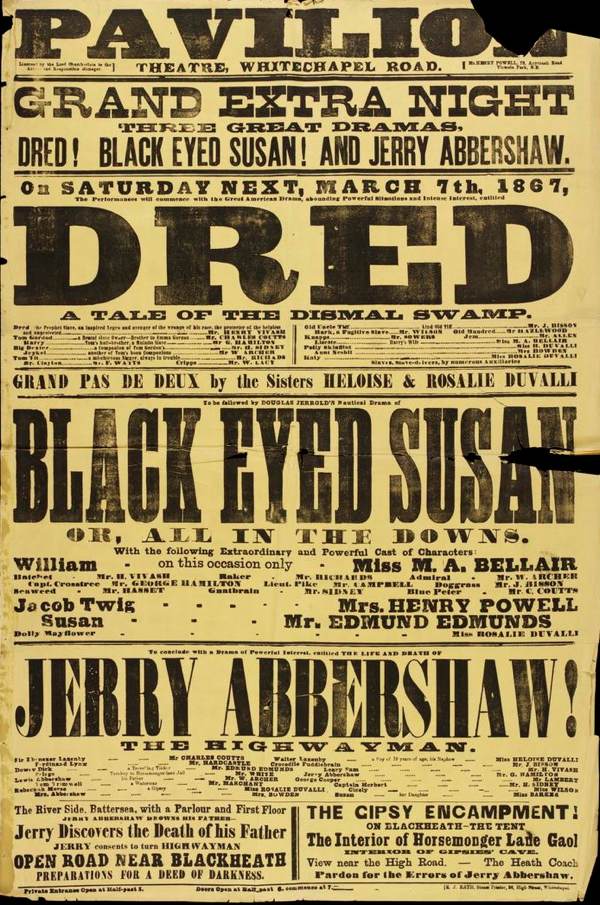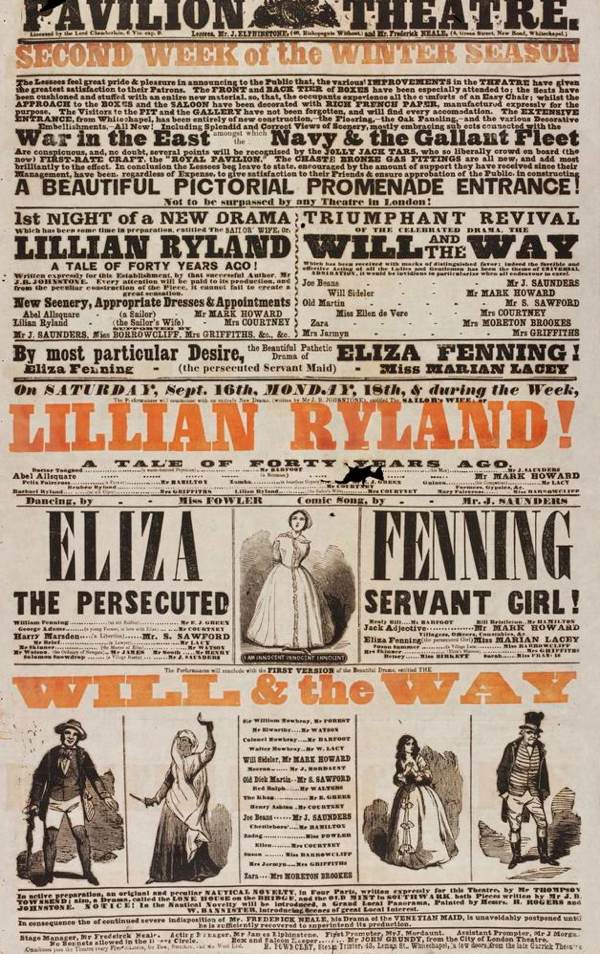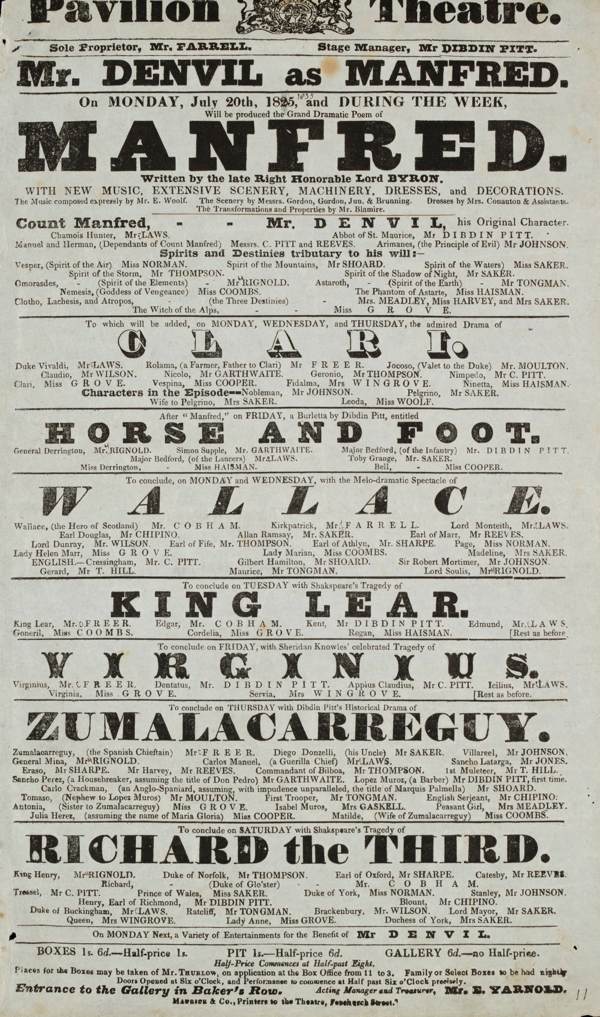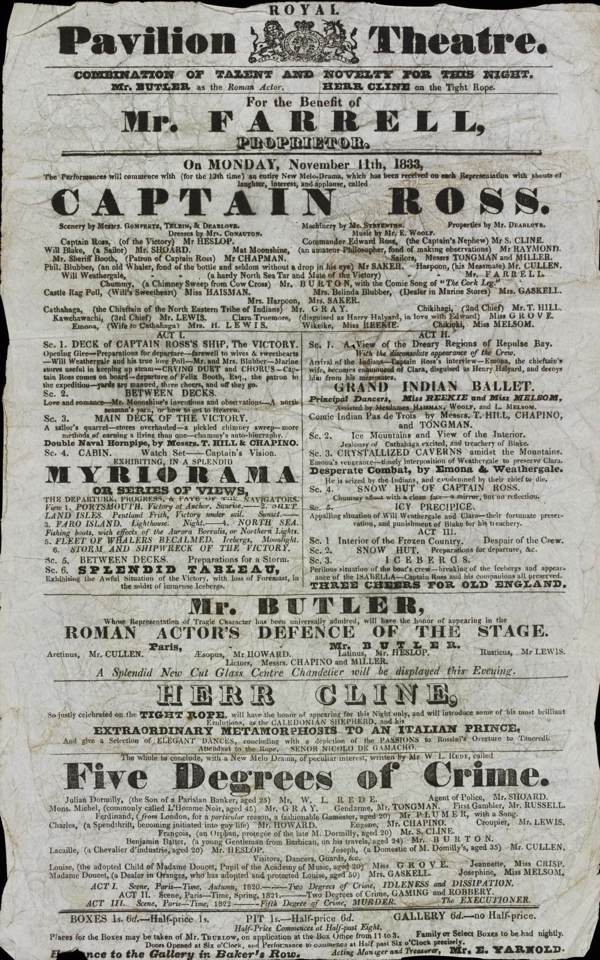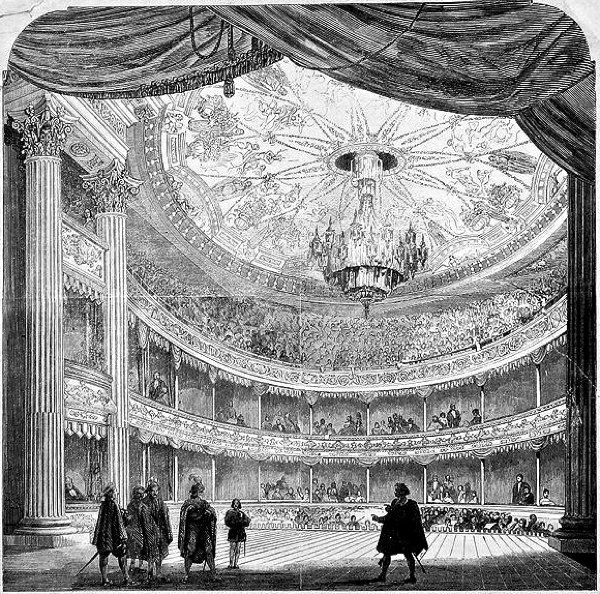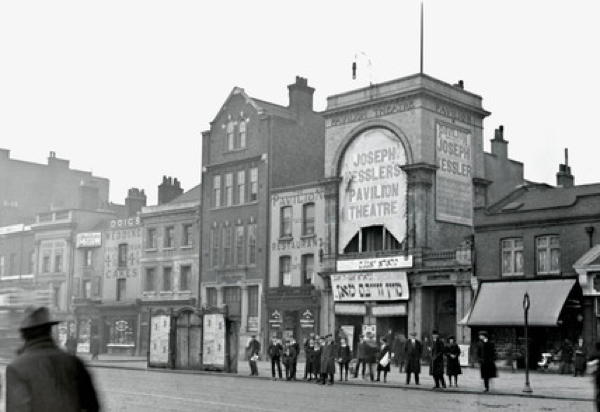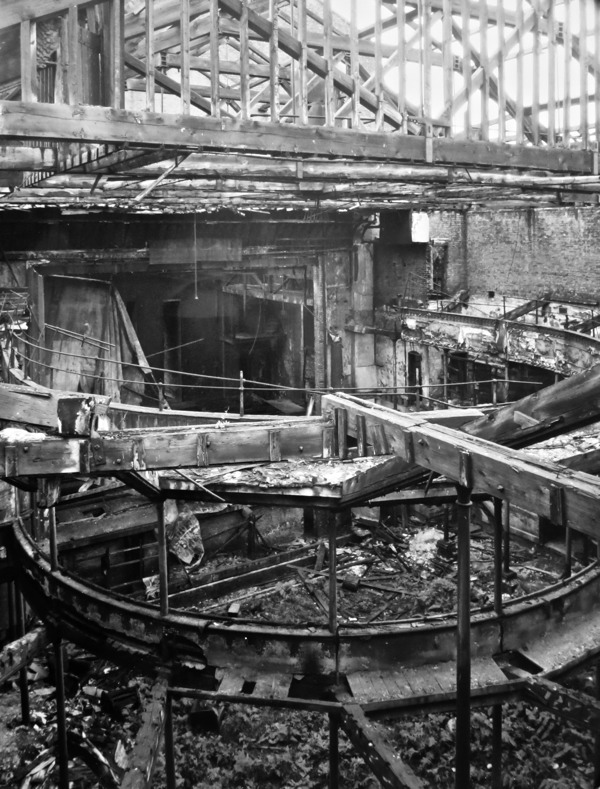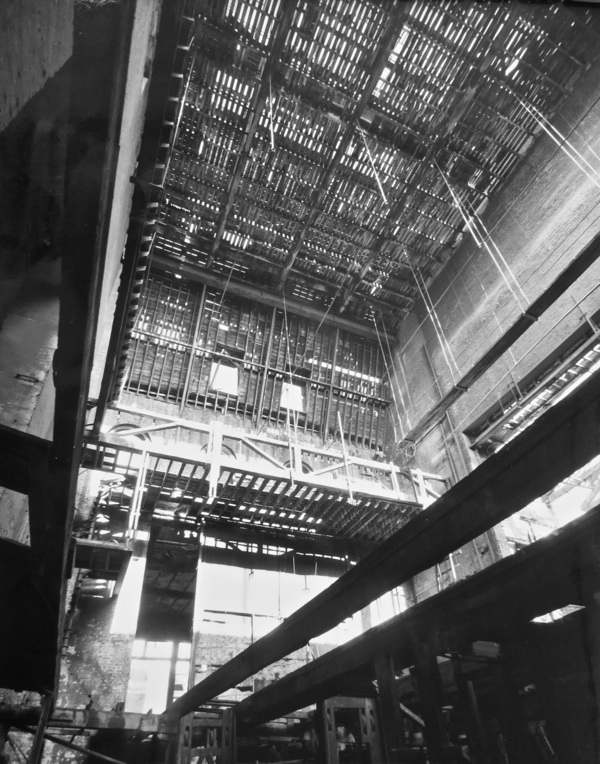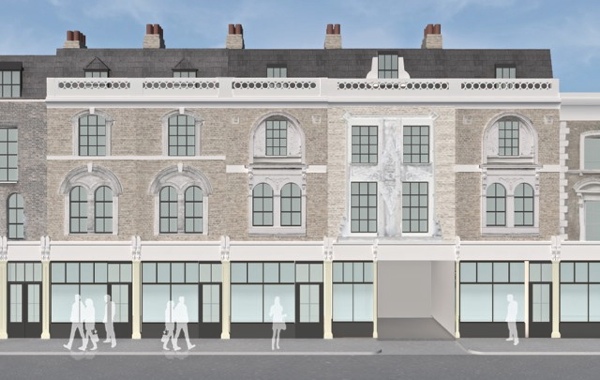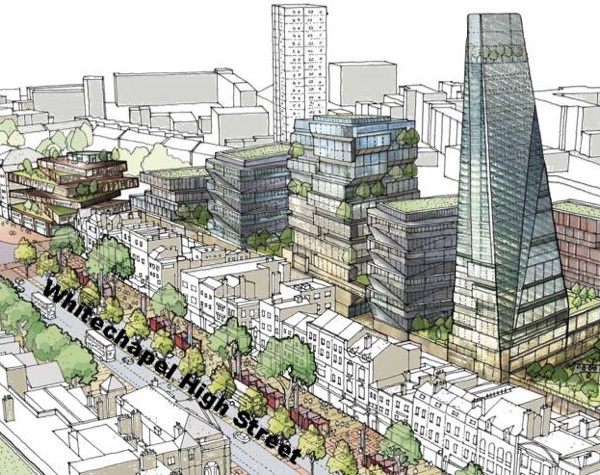As one of Whitechapel’s most appealing architectural features faces imminent threat of demolition, I tell the forgotten story that lies behind these extravagant facades in Vallance Rd.
3-13 Vallance Rd
Just last week, when I was writing about the artist Morris Goldstein who lived at 13 Vallance Rd, I was reminded of the distinctive quality of this unusual Victorian terrace in Whitechapel. Despite all the changes since World War II, these old shops have survived and the exoticism of their architecture with its strange mixture of styles fascinates me – as it does many others for whom the terrace is also a landmark in this corner of the East End, where so few old buildings remain to tell the story of what once was here.
In fact, I realised these tatty shopfronts and ornate facades have always spoken to me, but only recently have I discovered the nature of the story they were telling. The florid decoration was no whim upon the part of the architect but reflected their association and direct proximity to the adjoining Pavilion Theatre which opened here early in the nineteenth century, at first presenting nautical dramas to an audience from the docks and later becoming a Yiddish theatre to serve the Jewish population in Whitechapel.
Commanding the southern extremity of Vallance Rd, this terrace is almost the last fragment to remind us of the history of one of the East End’s most ancient thoroughfares, linking Bethnal Green and Whitechapel. Built in 1855, the vast and forbidding Whitechapel Union Workhouse once stood a few hundred yards north. In common with most of the nineteenth century buildings in this corner of what was known as Mile End New Town, it has long gone – swept away during the decades following the last war, leaving the streetscape fragmented today. Old Montague St, leading west to Commercial St and formerly the heart of the Jewish commerce in the East End, was entirely demolished.
Even Whitechapel Rd, which retains good sweeps of historic buildings – many of which are now under restoration as part of a Heritage Lottery Fund project – suffered major post-war casualties, including a fine eighteenth century terrace west of the London Hospital that was demolished in the seventies. Yet there was one building of great importance of which the loss went seemingly unnoticed -The Pavilion Theatre, a favourite resort for East Enders for nearly one hundred and fifty years before it was demolished in 1961.
The New Royal Pavilion Theatre opened in 1827 at the corner of Whitechapel Rd and Baker’s Row (now Vallance Rd) with a production of The Genii of the Thames, initiating its famous nautical-themed productions, pitched at the the maritime community. In 1856, the theatre burnt down and its replacement opened in 1858, boasting a capacity of three-thousand-seven-hundred, which was a thousand more than Covent Garden and included the largest pit in London theatre, where two thousand people could be comfortably accommodated.
‘The Great National Theatre of the Metropolis’ – as it was announced – boasted a wide repertoire including Shakespeare, opera (it became the East London Opera House in 1860) and, of course, pantomime. It gained a reputation for the unpretentious nature of its patrons, with one critic remarking “there is a no foolish pride amongst Pavilion audiences, or, as far as we could see, any of those stupid social distinctions which divide the sympathies of other auditoriums.”
In 1874, the Pavilion was reconstructed to the designs of Jethro T. Robinson, a notable theatre architect who designed two other East End theatres. both of which are now lost – the Grecian Theatre in Shoreditch and the Albion in Poplar, that was oriental in style. It was this rebuilding of the Pavilion which included the construction of a new terrace on Baker’s Row with interwoven Moorish arches evoking the Alhambra. The theatrical design of these buildings, with decorated parapets, panels and window surrounds, and the integration of side entrances to the theatre suggest the authorship or influence of J. T. Robinson himself.
In its later years, the Pavilion became one of the leading theatres in London, offering Yiddish drama, but as tastes changed and the Jewish people began to leave, the audience declined until it closed for good in 1934. In ‘East End Entertainment’ (1954) A. E. Wilson recalls a final visit to the old theatre before it closed.
“Once during the Yiddish period I visited the theatre. What I saw was all shabbiness, gloom and decay. The half-empty theatre was cold and dreary. The gold had faded and the velvet had moulted. Dust and grime were everywhere. And behind the scenes it was desolation indeed. The dirty stage seemed as vast as the desert and as lonely. I realised that there was no future for the Pavilion, that nothing could restore its fortunes, that its day was over.”
The decline of the Pavilion had been slow and painful. After the theatre closed in the thirties, it was simply left to decay after plans to transform it into a ‘super cinema’ failed to materialise. Bomb damage in the war and a fire meant that when a team from the London County Council’s Historic Buildings Division went to record the building in 1961, they found only a shell of monumental grandeur. After the theatre was finally demolished in 1961, the northern end of the terrace was also demolished leaving just number 13 (the former Weavers Arms Pub) and the battered row that has survived to this day.
Astonishingly, this last fragment of the Pavilion Theatre complex – numbers 3-11 Vallance Rd are now under threat of imminent demolition. Apparently learning nothing from the mistakes of the past, Tower Hamlets Council intends to clear the site for a new ‘landmark’ building as part of its masterplan for the area. Yet Whitechapel does not require more large-scale office and residential development at the expense of its traditional streetscape with small shops and historic character.
The Council is claiming that the terrace in Vallance Rd must be demolished – even though it is in a Conservation Area – because it poses a threat to public safety, yet the Council is the owner of the buildings and is earning rent from number 11 which is still occupied. Conveniently, it was the Council’s own surveyor who claimed the buildings are unsound and, subsequently, they have denied access to an independent structural engineer commissioned by the East End Preservation Society. Meanwhile the Spitalfields Historic Buildings Trust, which has previously restored structures in a far worse state of decay, has written to the Council offering to take on the job of repairing the buildings.
In the spirit of high theatrical farce, the Council’s consultant writes of the buildings in the Vallance Rd terrace in 2013 the Heritage Report, accompanying the application for demolition, that ‘… [they] do not contribute to the character or appearance of the Conservation Area’ directly contradicting the Council’s earlier Conservation Area appraisal of the area in 2009 which gives the following priority for action – “Encourage sympathetic redevelopment of gap sites west of Vallance Rd and secure restoration of 3-11 Vallance Rd.”
5 & 7 Vallance Rd, showing decorative window surrounds and parapet (Alex Pink)
9 & 11 Vallance Rd. With its decorative central panel, number 9 leads through to a courtyard where the theatre’s carpentry workshop once stood (Alex Pink)
3 Vallance Rd with original shopfront (Alex Pink)
Looking north over Vallance Rd (left) and Hemming St (right), 1957 (City of London, London Metropolitan Archives)
Whitechapel Union Workhouse in Vallance Rd, at junction with Fulbourne St, 1913 (City of London, London Metropolitan Archives)
Whitechapel Union Workhouse, Vallance Rd 1913 (City of London, London Metropolitan Archives)
Corner of Vallance Rd and Hereford St, 1965 (City of London, London Metropolitan Archives)
Bricklayers Arms, Vallance Rd and Sale St, 1938 (City of London, London Metropolitan Archives)
Old Montague St and Black Lion Yard, 1961 (City of London, London Metropolitan Archives)
Old Montague St and Kings Arms Court, 1961 (City of London, London Metropolitan Archives)
Old Montague St looking east with Pauline House under construction, 1962 (City of London, London Metropolitan Archives)
The first Royal Pavilion Theatre in Whitechapel, 1856 (East London Theatre Archive)
Playbill 1867, nautical drama was a speciality at the Pavilion (East London Theatre Archive)
Playbill 1854 (East London Theatre Archive)
Playbill 1835 – note reference to gallery entrance in Baker’s Row (Vallance Rd) (East London Theatre Archive)
Playbill 1856 (East London Theatre Archive)
Playbill 1833 (East London Theatre Archive)
Playbill 1851 (East London Theatre Archive)
The Great National Theatre of the Metropolis’ – the rebuilt Pavilion, 1858
Plan of the Pavilion in eighteen-seventies showing how the houses in Baker’s Row (Vallance Rd) are integrated into the theatre
The Pavilion as a Yiddish theatre in the thirties
Pavilion Theatre facade on Whitechapel Rd, 1961 (City of London, London Metropolitan Archives)
Auditorium of Pavilion Theatre, 1961 (City of London, London Metropolitan Archives)
Pit and stage at Pavilion Theatre, 1961 (City of London, London Metropolitan Archives)
Fly tower of Pavilion Theatre, 1961 (City of London, London Metropolitan Archives)
Back wall of the Pavilion Theatre, 1961 (City of London, London Metropolitan Archives)
17-29 Vallance Rd, showing the large scene doors entrance and gallery entrance beyond, all integrated into the terrace, 1961 (City of London, London Metropolitan Archives)
Sketch of the elevation of the Oriental Theatre, Poplar High St, by Jethro T. Robinson, 1873 – note usage of the arch-within-an-arch motif as seen in the Vallance Rd terrace
How the terrace could look if restored (Graphic by Nick Pope)
Elevation of the terrace as it could look after restoration (Graphic by Nick Pope)
Tower Hamlets Council’s vision for the future of Whitechapel
New photographs of Vallance Rd Terrace © Alex Pink
You have until Tuesday 14th January to click here and object to the demolition of 3-11 Vallance Rd
Follow the East End Preservation Society
Facebook/eastendpsociety
Twitter/eastendpsociety
Click here to join the East End Preservation Society
You may also like to read about
The East End Preservation Society
The Launch of The East End Preservation Society



